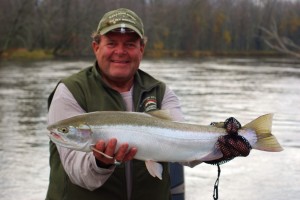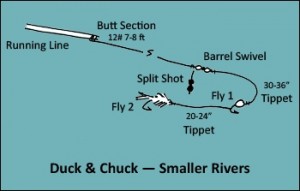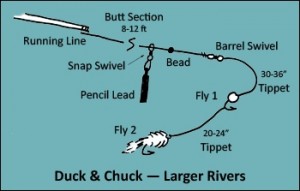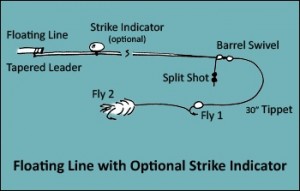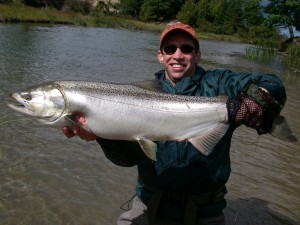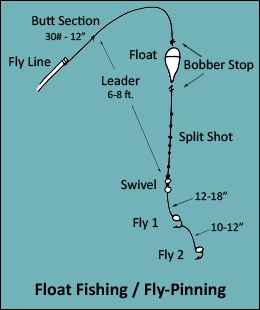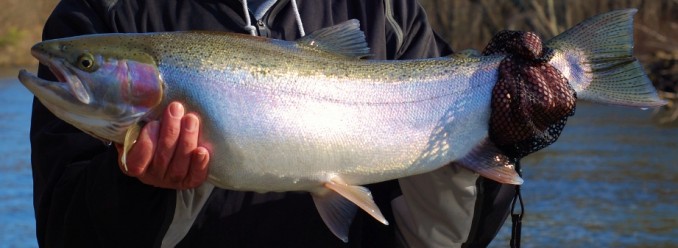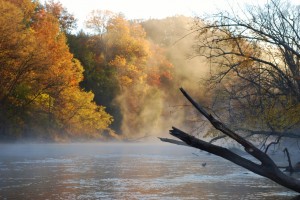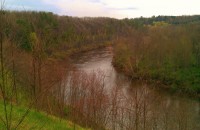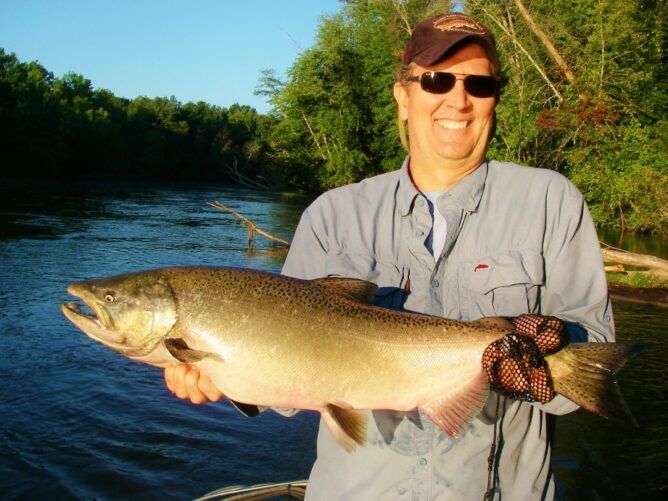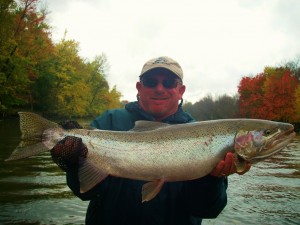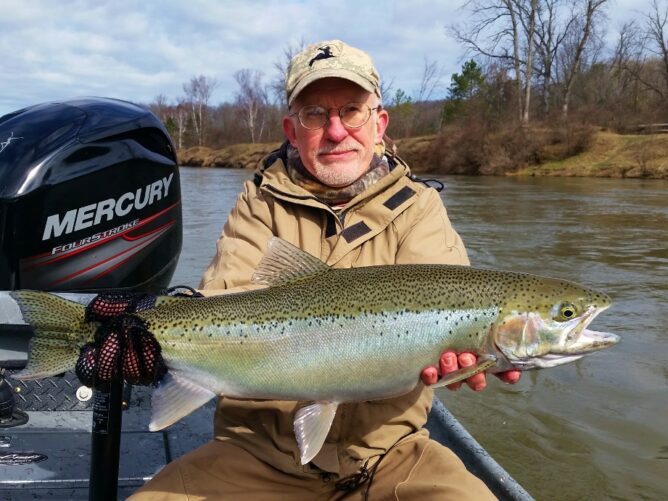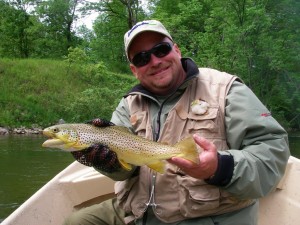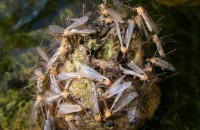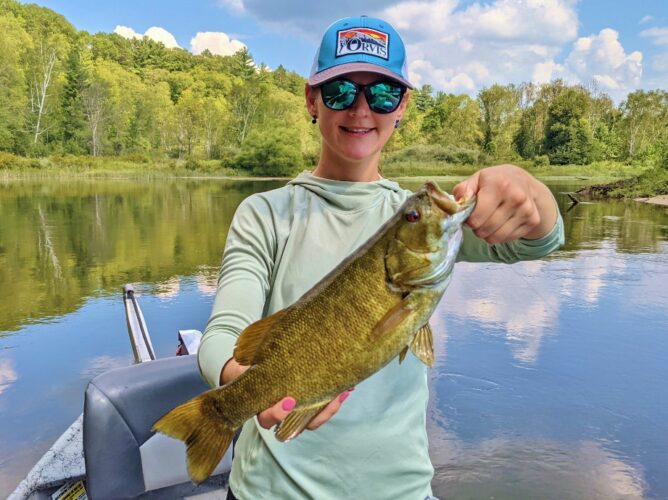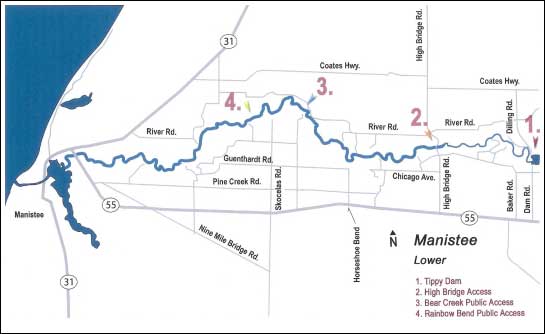As August comes to an end, September has most of us thinking about salmon and fall.
With the cooler temps the past few weeks, ideal winds and some rain, fish are starting to show up in the west coast rivers including the Betsie, Manistee, Bear Creek and Pere Marquette and should continue throughout the month. Many of these fish are staging and holding in deeper, slow holes in the lower sections of the rivers . Presentations can be difficult for fish that sit just on insides of seams and sometimes simply aren’t thinking about eating but perseverance and pattern changes can make the difference some days. Eggs and nymphs are the standard when it comes to nymphing, but those looking to put in time can sometimes get a grab on a streamer – it’s not a quantity thing, but a quality thing.
Not into the crowds, big fish and heavy rods? Trout rivers become vacant this time of year with school starting up, weekend football games taking place and vacations winding down. The terrestrial fishing can be good as the unpressured fish slip out from hiding. And as cooler temps continue with some overcast days, look for the streamer fishing to start up again. The water temps on the Manistee and Boardman are cool and the brook trout have take notice – they are about as vibrant as I have ever seen. Terrestrials, foam and rubber legged patterns and attractors are a great place to start on the surface with small streamers fished on a floating line working below the surface.
Bass fishing remains decent on local lakes with the top water fishing being a lot of fun with all of the weed growth found this time of year. The bluegill fishing has tapered off a little but are still around to put a bend in the rod for those looking for simple fishing or introducing someone to the sport.
Have a safe holiday weekend and good luck.
Ted
Salmon/Steelhead Combo – Late Sept. through early October offers a chance at both species on the Manistee.
Fall Steelhead – October, November and into December, these fish will bend your rod like no other – experience it.
Trout/Steelhead – The lower Manistee offers some great streamer fishing for trout in late Fall as another option.

